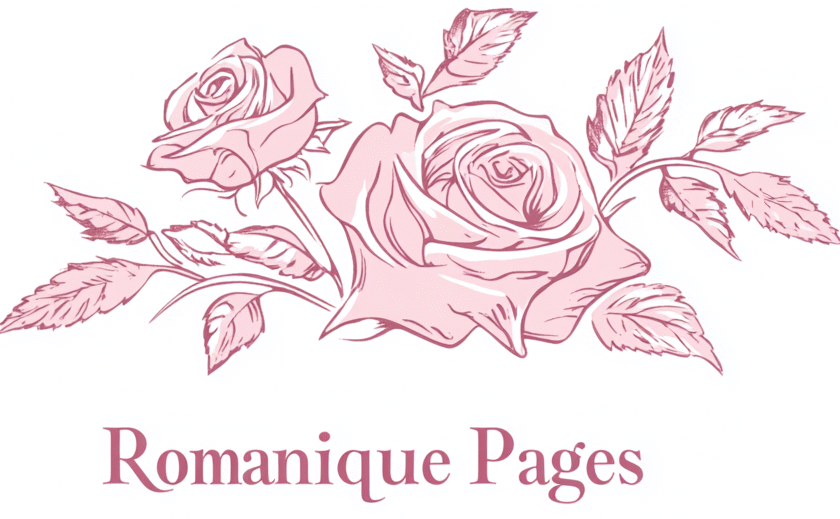
LGBTQ+ love has been gaining real momentum in contemporary romance books, bringing in diverse characters and heartfelt stories that I wish I’d seen growing up. These stories aren’t just about representation; they’re about complex, relatable experiences anyone can connect with. If you’re new to reading or writing LGBTQ+ romance, or just curious about how it fits into the wider romance scene, I’ve got a practical guide for you right here.
What’s Special About LGBTQ+ Love Stories?
LGBTQ+ romance has been steadily carving out its own space in the contemporary genre. Publishers and readers alike are seeking stories with more than just stereotypical characters or tired tropes. There’s a real appetite for authenticity, multilayered relationships, and romances that reflect the modern world. According to a 2023 survey by Publishers Weekly, sales of LGBTQ+ romance titles are up, reflecting a growing interest in more inclusive stories.
For me, what stands out in these stories is how they handle themes like coming out, chosen family, and love. These aren’t just background details. They’re core parts of character development and what makes these stories so immersive. The romance feels fresh and honest, even to readers who aren’t part of the LGBTQ+ community themselves. Many readers say that the focus on real emotional journeys makes these stories resonate in deeper ways than some older romance tropes.
Getting Into LGBTQ+ Romance: Where To Start
The contemporary romance market can feel overwhelming, especially if you’re new to LGBTQ+ fiction. Some books focus on first love, while others deal with mature relationships or bigger life challenges. Here’s a quick breakdown of themes and formats you’ll bump into:
- Coming of Age: Following young characters as they figure out identity and love. Books like “Simon vs. the Homo Sapiens Agenda” by Becky Albertalli are pretty handy for those just starting out.
- Second Chance Love: For characters who’ve been through heartbreak or loss, second chance romance stories show growth and new beginnings.
- Workplace Romance: Love can spark between coworkers, raising a few fun complications. These stories highlight daily life and modern challenges.
- Slow Burn: Romance that builds over time, letting readers really get to know the characters and their adventure.
New readers might also notice more than just gay or lesbian romances; there’s a wide range of queer identities featured, like bisexual, pansexual, asexual, trans, and nonbinary characters. Each brings their own perspective and richness to the story. Some novels even take up intersectional experiences, focusing on characters who have additional layers of identity, such as being LGBTQ+ and a person of colour, or navigating faith along with their sexuality. This keeps things varied and interesting.
How LGBTQ+ Romance Is Changing The Genre
LGBTQ+ romance is switching up the genre in really positive ways. Old school romance books often stuck to a single formula, but LGBTQ+ stories tend to play with structure and voice. I see a lot more dual or multiple perspectives, experimental timelines, and deeper looks at themes beyond just the relationship itself.
There’s also a bigger push for ownvoices stories, where authors write from personal experience. This helps the stories feel less like someone is guessing what being queer is like, and more like they’re sharing a real slice of life. Books like “Red, White & Royal Blue” by Casey McQuiston or “Boyfriend Material” by Alexis Hall are great examples of this switch-up. Additionally, the genre is seeing an increase in stories highlighting not just romantic love but also friendship, community ties, and personal growth, all told through the lens of LGBTQ+ experiences. This approach offers more space for good storytelling that goes beyond the classic happily ever after.
Tips For Exploring LGBTQ+ Romance
I’ve found it’s easy to get the best experience from LGBTQ+ romance when you know what to look for. Here’s what I suggest for both readers and writers wanting to get into it:
- Look For Ownvoices Authors: Seek out writers who share an identity with their characters for an authentic vibe.
- Read Reviews and Recommendations: Platforms like Goodreads and Bookstagram have thriving communities recommending their favourite LGBTQ+ romances. It’s a great way to track down hidden gems.
- Mix Up The Subgenres: Try everything from rom-coms to dramatic contemporary or even some light fantasy worlds where the love story takes centre stage.
- Pay Attention To Content Warnings: LGBTQ+ romance sometimes tackles heavy subjects like discrimination or family rejection. Content warnings help you choose books that fit your comfort level.
- Support Indie Authors: Smaller publishers and self-published writers are often the trailblazers in queer romance. Checking out their work can lead you to stories that are exceptionally fresh and original.
Mixing these approaches makes exploring LGBTQ+ romance fun, eye-opening, and rewarding. With each new title, you’ll likely stumble upon perspectives and experiences you haven’t read about.
Challenges To Keep In Mind
Writing and reading LGBTQ+ romance isn’t always plain sailing. Here are some common challenges I’ve come across, along with ways to handle them:
- Stereotypes: Some stories rely too much on old stereotypes. Looking for well-rounded, unique characters leads to a better read.
- Limited Shelf Space: Not every bookstore or library carries a big LGBTQ+ selection. Digital platforms or indie bookstores often have a better variety.
- Representation Gaps: Some identities, like asexual or nonbinary, are still underrepresented. Online lists and recommendation blogs are handy for finding books that fill those gaps.
- Gatekeeping: Sometimes, only certain types of LGBTQ+ love get spotlighted. Seeking stories that reflect a wider range of experiences helps mix things up.
Stereotypes
I run into books where all gay characters are painted the same way, or female couples are written mainly for a straight audience. Avoiding books that fall into lazy patterns helps support better representation and storytelling. Spotting and calling out those issues in reviews can help others find better reads.
Shelf Space And Access
When I want to explore LGBTQ+ romance, local shops sometimes only offer “the big hits.” Shopping online, especially at queer-owned bookstores, usually gives more options and a bigger sense of community. Public and school libraries are slowly catching up as demand increases, so asking about their acquisition policies or suggesting new titles for their lists is worth asking about. Don’t be shy to recommend a purchase when your library lacks LGBTQ+ titles—they are often happy to get some insight from readers.
Representation Gaps
There’s still a lot of room for more trans, nonbinary, and intersectional queer romances. I always keep an eye out for bloggers and social media posts that feature new releases in these spaces. It’s really important that everyone gets to see a reflection of themselves somewhere on the page. Sometimes, exploring smaller presses and translated works from other cultures can open up new stories you might have missed.
Gatekeeping
Sometimes, mainstream publishers or marketing lean into the “easy sell.” Exploring books outside the bestsellers list can reveal more diverse, and often more interesting, takes on queer romance. Reaching out to queer literary communities online can set you on the path to less mainstream, yet deeply resonant books.
These hurdles are real but definitely not impossible to overcome. The more people talk about and support diverse LGBTQ+ romance, the wider the range of stories becomes. Collective effort from readers, reviewers, authors, and publishers keeps the scene moving forward. Keeping an eye out for positive change helps everyone find their place in these stories.
Next-Level Tips For Fans & Writers Of Queer Romance
Reading and writing LGBTQ+ romance can be pretty rewarding, especially if you’re up for trying something new. Here are a few advanced tips from my own experience:
Experiment With Structure: Play around with dual timelines, diary entries, or text convos. Nonlinear storytelling really resonates with readers looking for a modern feel. Perspective shifts can also add depth and keep things dynamic.
Mix Romance With Real Life Issues: It’s cool seeing romances that also touch on mental health, activism, or cultural identity. This kind of depth keeps things rooted in reality while still being swoonworthy. The blending of real struggles and sweet moments lets stories hit even harder.
Join LGBTQ+ Book Clubs: Community is where I find the best recommendations and honest discussions. Many clubs host author Q&As and themed reading challenges; worth checking out for deeper dives. Online forums and discussion groups also offer spaces to get into what you’ve read, share opinions, or ask authors about their work.
Support Debut Authors: New writers often bring different outlooks and creative risks. I always keep an eye on debut book lists for upcoming talent. Giving feedback and helping spread the word about their work can greatly boost diverse voices and fresh ideas.
These tips can make any reading or writing ride in queer romance richer, fresher, and even more personal. If you write, don’t shy away from sharing your own voice; authentic experiences resonate with today’s readers like never before. And if you love to read, sharing your favourites with friends or on social media fuels more inclusive storytelling for everyone.
Books And Resources To Start With
Choosing just where to start can get tricky, so here are a few picks from my own shelves, plus some practical resources:
- Red, White & Royal Blue by Casey McQuiston – A fun, heartfelt look at love and politics.
- The House in the Cerulean Sea by TJ Klune – Fantasy with a warm, romantic twist and a big focus on chosen family.
- Honey Girl by Morgan Rogers – Intertwines romance and self-discovery after an impulsive Las Vegas wedding.
- The NOVL’s Queer YA Book List – Offers up a wide range of young adult romances representing different identities.
- LGBTQ Reads Blog – A curated site packed with recommendations and new releases.
You could also look for local LGBTQ+ authors or anthologies, which offer a collection of shorter works. Anthologies are a good way to check out different voices quickly and find new writers to follow. Social media, particularly Instagram and TikTok, are also useful for discovering real-time recommendations, themed lists, and new releases.
Frequently Asked Questions
Here’s what people new to LGBTQ+ romance often ask:
1. What makes LGBTQ+ romance different from other contemporary romance?
Answer: The biggest difference is the focus on queer experiences and identities, though the heart of the story—love—remains universal. You’ll find new perspectives and issues that aren’t always present in popular romance. Some books touch on themes like discrimination, coming out, or forging new traditions, making them especially compelling.
2. Are LGBTQ+ romances only for queer readers?
Answer: Anyone can enjoy LGBTQ+ romance! Many straight and cisgender readers find queer love stories just as real and moving as other romances. Reading these stories expands empathy and understanding, and lots of readers say it broadens their perspective on relationships and family.
3. How can I find more LGBTQ+ romance books?
Answer: Goodreads lists, LGBTQ+ book bloggers, and specialty bookstores are all solid resources. Social media tags like #QueerRomance and #OwnVoices help uncover new titles. Book awards focused on LGBTQ+ literature, like the Lambda Literary Awards, are another great way to spot highly recommended titles.
3. Are there age-appropriate LGBTQ+ romances for teens?
Answer: Yes, there’s a growing list of young adult LGBTQ+ romances that focus on age-relevant themes, like coming out and first love, while keeping content approachable for younger readers. Middle grade and YA authors are increasingly writing positive, hopeful stories for younger audiences.
Wrapping up, LGBTQ+ romance has quickly become a lively, all-in-one space for storytelling that’s both heartfelt and modern. Whether you’re picking up your first queer romance or adding to an already packed bookshelf, the adventure ahead promises new voices, real connection, and a deeper sense of what love looks like across all kinds of lives.


